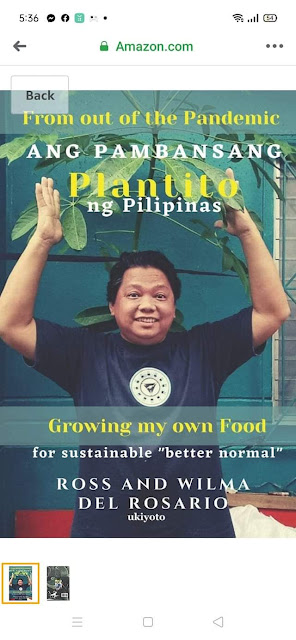Wazzup Pilipinas!?
In a shocking revelation that puts public health in the crosshairs, the EcoWaste Coalition has exposed the ongoing sale of lead-laced spray paints from Thailand in defiance of a national law that was supposed to protect the Filipino people from this silent poison. As the country kicks off National Poison Prevention Week, the watchdog group calls on government agencies to step up and crack down before more lives are put at risk.
The product at the heart of the controversy? Nikko Spray All-Purpose Quick Drying High Gloss Acrylic — a brand already flagged by the Food and Drug Administration (FDA) — yet continues to make its toxic rounds on local store shelves, from Pasay to Quezon City.
A Poison Hiding in Plain Sight
EcoWaste Coalition, known for its relentless advocacy for lead-safe environments, recently purchased eight variants of Nikko Spray Paint from different hardware stores. Using an X-Ray Fluorescence (XRF) spectrometer, they detected dangerously high lead content in several samples:
Dark Green – 780 ppm
Orange Red – 4,092 ppm
Leaf Green – 5,887 ppm
These levels are far above the 90 parts per million (ppm) legal limit mandated by Philippine law — a threshold recognized globally as the most protective standard for lead in paints.
Even more alarming, previous laboratory tests commissioned by EcoWaste uncovered even higher concentrations in other Nikko variants, such as:
Medium Yellow – a shocking 52,200 ppm
Yellow – 19,800 ppm
Apple Green – 15,800 ppm
Such figures paint a disturbing picture of complacency and regulatory failure.
A Ban That Exists Only on Paper?
Despite the Chemical Control Order of 2013, which banned the use of lead in paint and enforced phase-out deadlines by 2016 and 2019 for decorative and industrial paints respectively, enforcement remains woefully lacking. Even after FDA advisories in 2023 and 2024 flagged specific Nikko variants as non-compliant and hazardous, these paints are still being sold — openly and without penalty.
Adding insult to injury, product labels fail to mention any lead content warnings, depriving consumers of their right to make informed choices. “While some precautionary text exists, there’s no acknowledgment of the extreme risks posed by lead exposure,” noted EcoWaste.
A Chemical That Damages for Life
According to the World Health Organization (WHO), lead is a “cumulative toxicant” that wreaks havoc on nearly every system in the human body — and young children bear the brunt of its damage. Even low levels of lead exposure can cause irreversible brain damage, developmental delays, behavioral problems, and learning disabilities in children.
In adults, it is linked to high blood pressure, kidney failure, and reproductive issues. For pregnant women, the dangers are even more pronounced: miscarriage, stillbirth, premature delivery, and low birth weight are among the devastating consequences.
Crucially, there is no known safe level of lead exposure — zero is the only acceptable number.
Who Will Stop the Poison?
As National Poison Prevention Week (June 22–28) is observed under Presidential Proclamation No. 1777, EcoWaste Coalition is urging a whole-of-government response. Led by the Department of Health (DOH), Philippine Society of Clinical and Occupational Toxicology (PSCOT), and the National Poison Management and Control Center (NPMCC), the week should not merely be symbolic — it must be catalytic.
EcoWaste is demanding:
Stricter customs screening for imported paints
On-ground enforcement at retail outlets
Sanctions against violators, including importers and sellers
Public education about the dangers of lead-containing products
In a joint effort with the International Pollutants Elimination Network (IPEN) and the Philippine Paint and Coatings Association, Inc. (PCCAI), EcoWaste has also released a “Public Notice on Lead-Containing Paints” aimed at arming consumers with vital information. (Access it here: ecowastecoalition.org/leadspraypaints)
A Global Example, Now Tarnished?
Ironically, the very same regulation that is being ignored today earned the Future Policy Award in 2021, recognizing the Philippines as a global leader in eliminating lead in paints. That honor now stands in sharp contrast to the grim reality on the ground.
“This is not just a regulatory lapse. This is a betrayal of public trust,” said an EcoWaste representative. “We have the law. We have the proof. What we don’t have is the willpower — and it’s costing lives.”
Conclusion: Wake Up Before It’s Too Late
As Filipinos mark another Poison Prevention Week, the haunting presence of toxic Thai spray paints on local shelves is a wake-up call to government regulators, importers, and consumers alike. The danger is not theoretical — it’s real, present, and deadly.
Until these poisons are pulled from our stores and our homes, the lead paint ban remains not a shield, but a broken promise.
Let us not wait for another tragedy to finally enforce what should have already been a done deal. The health of our children — and of generations to come — depends on it.
For updates and warnings on toxic consumer products, follow the EcoWaste Coalition’s alerts or visit: ecowastecoalition.org.
























 Ross is known as the Pambansang Blogger ng Pilipinas - An Information and Communication Technology (ICT) Professional by profession and a Social Media Evangelist by heart.
Ross is known as the Pambansang Blogger ng Pilipinas - An Information and Communication Technology (ICT) Professional by profession and a Social Media Evangelist by heart.






.jpg)





Post a Comment